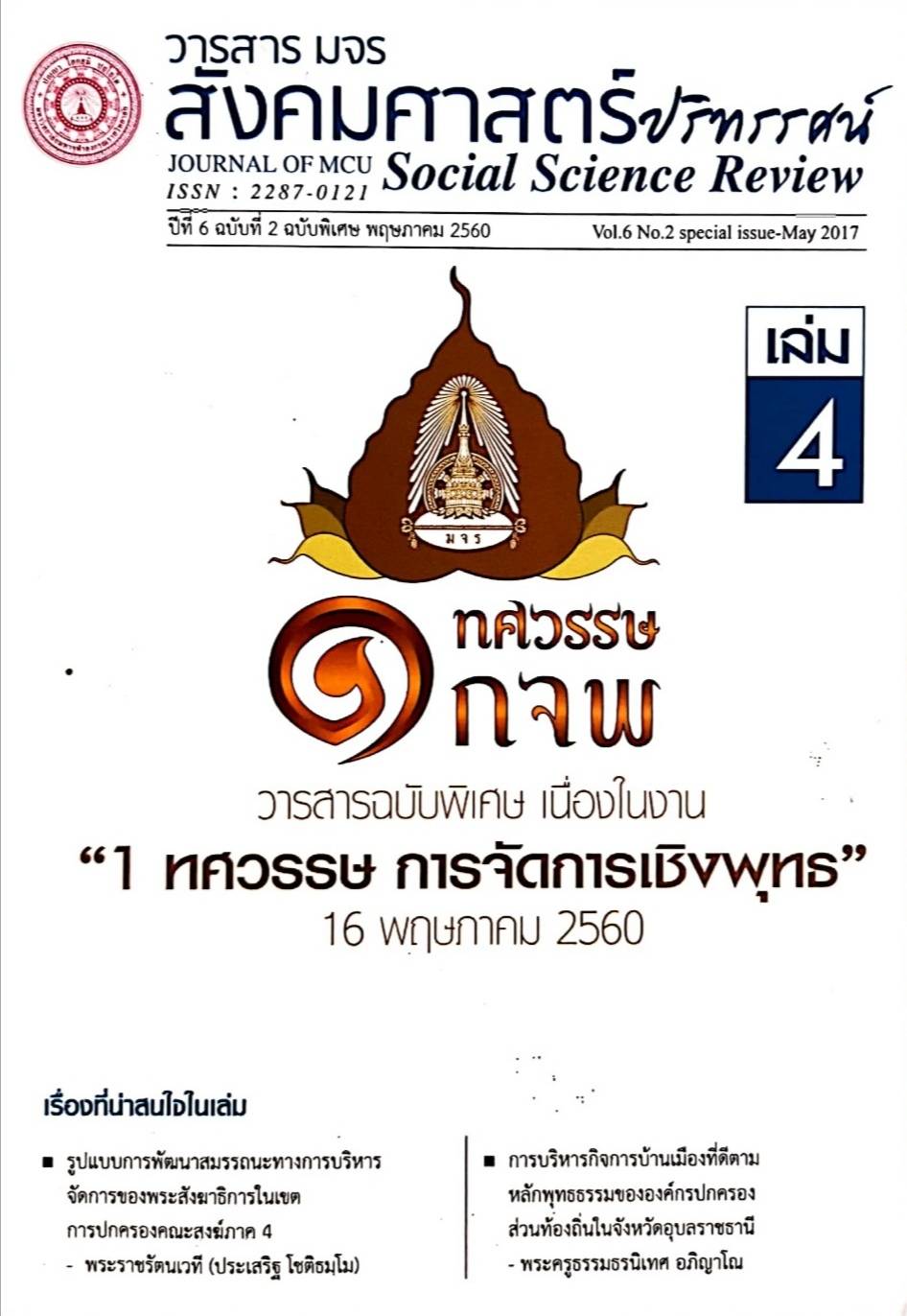APPLICATION MODEL OF APARIHANIYADHAMMA FOR TRANSPARENCY OF THE OFFICE OF CONSTITUTIONAL COURT ADMINISTRATION
Keywords:
The Office of Constitutional Court, Administration, TransparencyAbstract
This dissertation has 3 objectives; to study the general context of transparency
of constitutional court administration, to study the factors and the Buddhist principles
affecting constitutional court administration and to propose approaches to apply
Aparihaniyadhamma for transparency of constitutional court administration.
The research methodology is the mixed method research. For qualitative
research, the data was collected from 16 informants, which were experts in religions,
laws and political sciences, by taking in-depth interviews in order to analyze descriptive
data. For quantitative research, the data was collected by questionnaire completion from
the sample, which includes 130 government officers and employees at the Office of
Constitutional Court. Descriptive statistic is the method used to analyze data, which are
quantity, percentage, average and standard deviation.
The research found that;
1. General Context of Transparency of constitutional court administration are
as follows; (1) Planning is a regular meeting and a frequent meeting.
(2) Organization should focus on adherence to audit rules. And conflict of interest.
(3) Staffing must be based on transparency, fairness Such as knowledge, ability,
seniority, and without intervention intervene. (4) Directing must obey the law,
without guilty, persecuted or intimidated. (5) Coordinating should focus on
participation, unity and democracy. (6) Reporting must be systematically monitored
and be aware of the factual facts. And (7) Budgeting must be based on value,
transparency and good faith.
2. Factors affecting the administration of the Office of the Constitutional
Court found that the impact on the administration of the Office of
the Constitutional Court according to the principles of organizational management (POSDCoRB) must be Approaches to Apply Aparihaniyadhamma. Because, if not
applied together, may not be practical in practice. And it will affect
the administration of the Office of the Constitutional Court that may not be based
on the principle of transparency, fairness and verification.
3. Application Model of Aparihaniyadhamma for Transparency of
The office of Constitutional Court Administration. It is found that Aparihaniyadhamma
as well as other Buddhist principles can be applied to enhance the transparency of
constitutional court administration as follows; Planning use the MANAGE Model by
having a strategic project plan, to provide the Government with accurate, fast, tidy
and benefits to the government. Organization use the HOME Model for ethical
solidarity, respect each other. Staffing use the CHAIR Model for screening candidates
with knowledge. The ability to perform their duties to suit the position upheld
regulations and adheres to the law essentially. Directing use the ORDER Model
for both recipient and provider of command commands must know their duties
in various operational clarity non-discrimination and free from any conflict
of interest. Coordinating use the LINE Model for transparency, participation, and
respect for each other. Reporting use the OUT Model for reporting results with
correct information is consistent undistorted and the need to protect the collateral
reporting duties in good faith. Budgeting use the ORDER Model for taking into
account the need for transparency, honesty and accountability.
References
Cliffs :new Jersey Prentice-Hall. Lnc.
Don Hellriegel. (1982). Management. third edition. Addison - Wesley Publishing
Company. lmc.
Enest Dale. (1993). Management : Theory and Ptactictice. New York : Mc Graw – Hill.
Gulick L. and Urwick J.. (1973). Papers on the Science of Administration. New York
:Institute of Public Administration.
Henri Fayol (1930). Industrial and General Administration, New York : Mc-Grew Hill.
Max Weber,. (1947).The Theory of Social and Economic Organizations. Translated
by A.M.Handerson and T. Parsons. New York : Free Press.
Downloads
Published
How to Cite
Issue
Section
License
Copyright (c) 2020 Journal of MCU Social Science Review

This work is licensed under a Creative Commons Attribution-NonCommercial-NoDerivatives 4.0 International License.
In order to conform the copyright law, all article authors must sign the consignment agreement to transfer the copyright to the Journal including the finally revised original articles. Besides, the article authors must declare that the articles will be printed in only the Journal of MCU Journal of Social Sciences. If there are pictures, tables or contents that were printed before, the article authors must receive permission from the authors in writing and show the evidence to the editor before the article is printed. If it does not conform to the set criteria, the editor will remove the article from the Journal without any exceptions.





